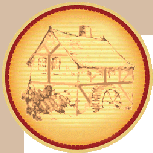by Les Saidel - February, 2014
Everyone hears the "buzz phrase" that fiber is healthy and good for your diet. We all naturally rush out to stock up on bran flakes, oatmeal porridge and the like, without fully understanding what it is about fiber that is healthy, how it works and how best to make use of its benefits with minimal side effects. That is the purpose of this article.
To understand how fiber works we need to know some gross anatomy. The digestive system is a multi stage process starting at the mouth (intake) and ending with the anus and urinary tract (excretion). Along the way between these we have the stomach, the small intestine and the large intestine (or colon). For simplicity's sake we will only discuss the stages of the digestive process that occur in the stomach, the small intestine and the colon and how they relate to fiber.
First off, let us emphasize that we are talking about dietary fiber, or fiber that occurs naturally in the foods we eat, not artificial fiber (think Cookie Monster - "I feel so hungry I could eat a blanket!"). There are two main types of fiber - soluble and insoluble fiber. Both are necessary and beneficial but behave differently.
Soluble fiber is fiber that dissolves in water and is found in foods like oatmeal cereal, legumes, apples, pears, oranges, nuts, carrots and cucumbers amongst others. When this kind of fiber comes into contact with water, it swells up to form a gel. This "swelling" effect achieves two purposes, it makes you feel full and it slows down digestion, leaving the food in the stomach and the small intestine for longer.
The benefits of this are numerous. Since you have a feeling of fullness, you eat less and therefore consume fewer calories and gain less weight. In addition, these swollen gel particles slow down the progression of food through the digestive system (like applying the brakes in a car). They also form a physical barrier between the stomach/small intestine wall and the food being digested, thus slowing absorption of sugars and cholesterol into the blood stream.
In technical terms this is called lowering the "glycemic index" of the food, meaning that the rate of absorption of sugar into the bloodstream from food in the stomach/small intestine is slow and not rapid. This is extremely important for preventing diabetes which can be caused by repeated sugar "shock" from refined foods that are too quickly absorbed and over stimulate the pancreas to secrete insulin. By also slowing down absorption of LDL (bad) cholesterol into the blood it helps prevent heart disease.
Insoluble fiber is fiber that does not dissolve in water and therefore does not swell into a gel. It occurs in foods like whole grains, brown rice, nuts, broccoli, cabbage, onions, tomatoes, dark green leafy vegetables, grapes and raisins amongst others. This fiber has the opposite effect in the digestive system to soluble fiber. It speeds up the progression of food in the digestive tract (like removing the brakes) and it adds bulk.
This kind of fiber also has numerous benefits. It has a laxative effect on the digestive system preventing constipation and serves a purpose in colonic digestion (the large intestine). To understand the full benefits of insoluble fiber we need to explore the digestive process a little more.
Food starts off in the stomach, then moves to the small intestine and finally to the large intestine or colon. The main purpose of the stomach is to excrete gastric acids and enzymes which break down the food. The small intestine, a narrow (2.5cm) highly convoluted tube (which is about 6m long!) is where most of the nutrients are absorbed into our blood stream. In the colon, or large intestine, a wider (7.5cm) tube (1.5m long), water is removed from wastes creating the stool and bacterial fermentation occurs.
Although most regard water removal from wastes the primary function of the colon, there is another, entire microcosm of activity taking place which is essential for normal bodily function. The colon is normally inhabited by a multitude of friendly bacteria (also called biotic, pro-biotic) that perform various important functions. For example, they synthesize many B-Complex Vitamins and Vitamin K. They crowd out and eliminate "bad" bacteria like Salmonella. They lower the level of toxins like ammonia.
Another important substance called short-chain fatty acids (SCFA's) are manufactured by the bacteria in the colon. These have received increasing scrutiny lately in medical research and are being found to be beneficial to more and more systems in the body, helping boost immunity. SCFA's are difficult to obtain from food and the primary source is the natural production in the colon.
Fiber is also called "colon food" because it is the best food for feeding the friendly bacteria and maintaining their proliferation and health in the colon. Fiber is broken down by a process of fermentation. The best fiber for fermentation is the soluble type, but the insoluble type is also of utmost importance. Its property of "speeding things up" ensures that fermentation takes place along the whole length of the colon, especially at the end (where colon cancer most occurs) and not only at the top (beginning) of the colon.
From this we see that both types of dietary fiber are highly beneficial to our health. They reduce calorie intake, they prevent diabetes and heart disease, they keep our colons healthy and contribute to the production of vitamins, antitoxins and SFCA's.
How much fiber do we need? Women need around 25 grams per day and men (who consume more calories on average) require 38 grams per day. Your diet should include both the soluble and insoluble types of fiber to be fully beneficial.
Some additional considerations: Increased fiber intake will result in more water absorption, thus necessitating a higher water intake. You should drink more water!
Since foods containing fiber increase fermentation in the colon, an unwanted side effect of the fermentation (in addition to the many benefits described above) is the production of intestinal gas, which may leave you feeling bloated. To avoid this, increase your fiber intake gradually. As you do, the "friendly" bacteria will thrive and slowly eliminate the "bad" bacteria (which produce most of the gas) until they are almost non existent. Other ways of naturally reducing gas are eating caraway seeds, fennel, pumpkin, cloves, chamomile or turmeric. All these reduce flatulence without interfering with the beneficial aspects of the fermentation. Many people starting high fiber diets give up when they experience increased flatulence. By increasing your fiber intake gradually and alleviating further with natural remedies you will make the process less painful.
If your diet consists mostly of refined, highly processed foods, chances are you are deficient in dietary fiber. Studies have shown that most people are only getting 15 grams or less of fiber each day, unless they make a conscious effort to eat fiber rich foods. Insufficient fiber in your diet can cause or aggravate numerous ailments from diabetes to heart disease to colon cancer, which we definitely want to steer clear of and something that can easily be done by increasing your fiber intake.
"An apple a day keeps the doctor away" is not an old wives tale, apples contain soluble fiber. Eaten together each day with foods like oatmeal porridge, whole grain bread, tomatoes and leafy greens, we see it is not so difficult to get hooked on a high fiber diet.
Stay healthy!
Les Saidel
© Copyright. All rights in the above articles are reserved to the author Les Saidel.
No part of this website or the above articles may be transmitted in any form or by any
means without permission in writing from the author.




